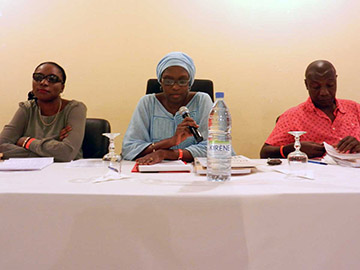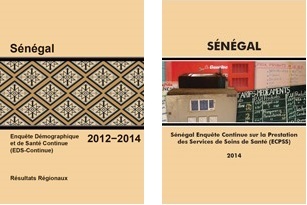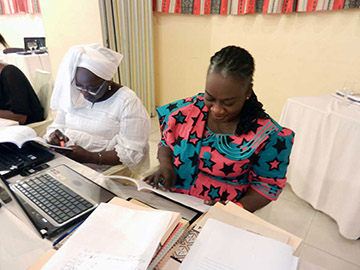Engaging with DHS Data in Senegal
Days like today are why I love my job. “Thematic data use workshops are the most important part of the survey,” Fatou CAMARA, director of the Senegal Continuous Survey at l’Agence Nationale de la Statistique et la Démographie (ANSD), tells me over dinner. “They’re also my favorite,” she adds. I couldn’t agree more. It’s always rewarding to watch people engage directly with data from The DHS Program surveys, but even more so when it’s the women and men who manage a country’s health programs.

Representatives from ANSD, the Ministry of Health and Social Action, and USAID officially open the thematic workshop.
The topics for the thematic workshop are maternal health, child health, and nutrition. Regional medical coordinators, reproductive health coordinators, and nutrition supervisors have come from all 14 of Senegal’s regions to participate. They are joined by the national maternal health, child survival, and nutrition program directors.
 The morning is packed with introductions and presentations on the relevant results from the Senegal Continuous Survey. Data is collected each year in Senegal and the results are designed to guide program planning, monitoring, and evaluation. The Senegal Continuous Survey has two parts: 1) the Continuous DHS, which collects data on households, women, men, and children; and 2) the Continuous SPA, which collects data on health facilities, health care providers, and clients receiving health care.
The morning is packed with introductions and presentations on the relevant results from the Senegal Continuous Survey. Data is collected each year in Senegal and the results are designed to guide program planning, monitoring, and evaluation. The Senegal Continuous Survey has two parts: 1) the Continuous DHS, which collects data on households, women, men, and children; and 2) the Continuous SPA, which collects data on health facilities, health care providers, and clients receiving health care.
Questions and comments during the discussion following the presentations are intriguing. “We trained our health care providers on the integrated management of childhood illness, but the [survey] results show that they aren’t putting this into practice during sick child consultations.” “Almost a quarter of births still occur at home instead of health facilities, though the availability of delivery services is high. We need to increase our communication efforts with women.” Continuous SPA coordinator, Dr Ibou GUISSE, and the director of field operations for the Continuous DHS, Mabeye DIOP, do an excellent job of providing detailed answers and explanations.
The afternoon begins with an activity on how to read and understand tables from the Continuous Survey. Participants are guided step-by-step, from reading the title and subtitle to finding the totals in the table. Over lunch, a participant tells me that the activity is useful, “Previously, I sometimes struggled to make sense of the tables. Now I’m more confident.”
The rest of the day is dedicated to group work. Each region must identify two priority actions from their regional strategic health plans that will be completed in the six months after the workshop. They must also indicate specific results from the Continuous Survey that support the actions they have chosen. Finally, they must create an action plan for these priority actions, including next steps and deadlines. The groups are so engrossed in the group work that they continue well past 6 PM. Tomorrow, they will present their priority actions, supporting data, and action plans. I can hardly wait see to see the data in action!




Thanks for sharing this post
It’s motivating to see people engaged in using and disseminating DHS results. However, I belief that more training need to be directed to the universities and research institutes in Senegal for them to use DHS data to further the research agenda. With my students, I am preparing 2 papers on Child immunization and IPT in Senegal using 2010-2011 DHS but on Pubmed there is little publication from Senegal on these topics.